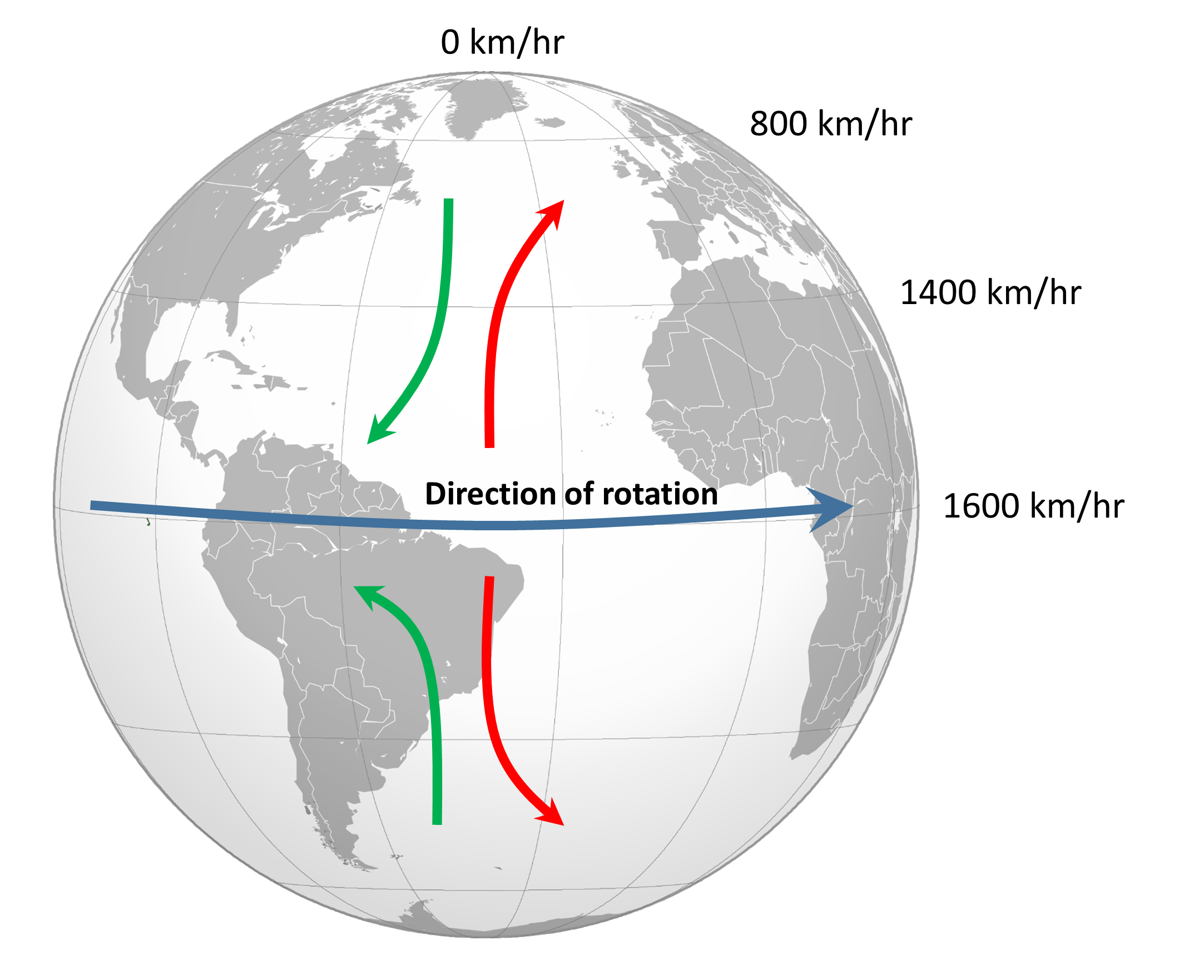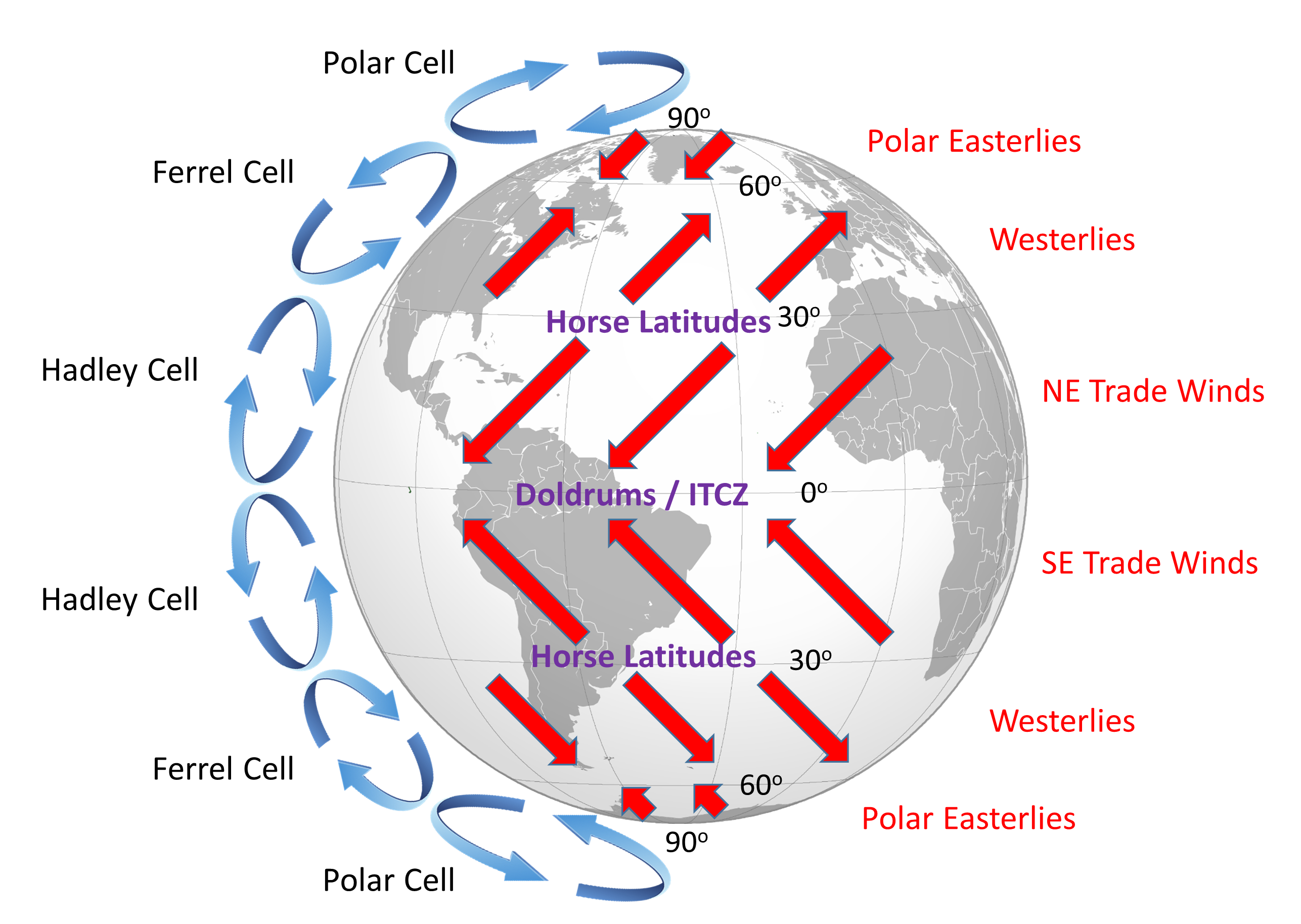The Primary Force Which Causes All Winds Is the
But because it does rotate the rotation of the Earth leads to the Coriolis effect. The air will be still one day and the next powerful gusts of wind can knock down trees.
This causes a sea breeze that blows from the ocean into the land.

. Running water Streams lakes rivers ponds oceans- all affect the Earths landscape. Wind under high pressure moves toward areas of low pressure. Precipitation moving into the area D.
In the northern hemisphere surface winds blow counterclockwise and into a low and flow out of a high in a clockwise direction. The correct answer would be B. Wind is a part of weather we experience all the time but why does it actually happen.
What is the primary cause of local winds. Pressure gradient force is the primary force influencing the formation of wind from local to global scales. These factors working together cause the wind to blow in different directions and at different speeds.
Eventually you will be able to draw the directions of the forces for each of the four upper level winds examples. Specifically differences in pressure across the globe result in a force called the pressure gradient force that sets air in motion. Some winds are generated by changes in air pressure and temperatures locally.
The weaker Coriolis force no longer balances the pressure gradient force and so the wind blows across the isobars toward lower pressure. Have you ever seen the Grand Canyon. The primary source of wind is caused by the unequal heating of the earths surface by the sun.
The main cause of wind is a little surprising. Temperature differences on Earths surface. Historically the Beaufort wind force scale created by Beaufort provides an empirical description of wind speed based on observed sea conditionsOriginally it was a 13-level scale 0-12 but during the 1940s the scale was expanded to 18 levels 0-17.
The pressure gradient force PGF the Coriolis Force and friction. These winds may change direction as conditions change throughout the day. The pressure-gradient force the Coriolis force and friction.
Added an answer on January 5 2021 at 1045 am. The Earths rotation prevents that flow from being direct but deflects it side to side right in the Northern Hemisphere and. When in geostrophic balance wind in the atmosphere has a balance between the pressure gradient force and the Coriolis force.
What is going on here. One example of a local wind is the wind that blows on the ocean coast. PGF is the force produced by differences in barometric pressure between two locations and is responsible for the flow of air from an area of high pressure to an area of low pressure.
Out of the three forces that cause wind which force is mostly absent in the upper troposphere and WHY. Ocean water shapes the coast ponds and lakes determine what the land looks like around them. Without going into detail as to why rotation creates this apparent force the Coriolis effect causes winds and all moving objects to be deflected.
There are two major drivers of winds on Earth the first is ultimately generated by the Sun as the Sun heats the atmosphere it does so unevenly cloud cover differences in the thickness of the atmosphere variation of the albedo altering the amount of energy absorbed by the ground and convected into the atmosphere all lead to small variations in the atmospheric pressure this. As you might have guessed since weve been discussing atmospheric pressure the reason that air moves horizontally is related to pressure. In other words what causes the wind to blow.
The wind is a moving air that is caused due to the differences in air pressure within our atmosphere. Which one of these are correct. You should view the short video on this so-called effect or force The Coriolis Effect.
The whole thing was carved by a running river below. There are two primary causes for the wind. Wind is a horizontal flow of air from higher pressure to lower pressure the force that generates wind is called the Pressure-Gradient Force.
I hope this. Air flows from areas of higher pressure to areas of lower pressure. Geostrophic balance is arguably the most important force balance in the atmosphere and holds nearly all the time except for a few specific cases scenarios to be discussed later.
During the day the land heats up faster than the ocean. B Friction because wind at this level feels the Earths surface c Friction because wind at this. What is the force that generates wind.
In this article we will learn about the Types Of. There are general terms that differentiate winds of different average speeds such as a breeze a gale a storm or a hurricane. The main factors that affect wind direction and speed are.
Option B is the correct answer. Thus the pressure gradient force is balanced by friction and Coriolis force. The primary cause of wind is not atmospheric pressure but atmospheric pressure differences.
The force that generates wind is Pressure gradient force. This force is determined by the spatial pattern of atmospheric pressure at any given moment in time. This horizontal movement is caused by differences in air pressure within our atmosphere.
We will see that 2 forces the pressure gradient force PGF and the Coriolis force CF cause the winds to blow this way. When one area is heated quicker than other areas the air warms expands becomes lighter and rises. The speed and direction of the wind is governed by three forces.
The primary cause of local winds is the temperature differences on Earths surface. Wind flows from the high air pressure area to the low air pressure area to balance the disparities of air pressure. More specifically its differences in temperature between different areas.
Wind is caused by air flowing from high pressure to low pressure. The wind in simple terms is the horizontal movement of Air. It is absolutely amazing.

8 2 Winds And The Coriolis Effect Introduction To Oceanography

8 2 Winds And The Coriolis Effect Introduction To Oceanography
Chapter 10 Atmospheric Forces And Wind Atmospheric Processes And Phenomenon

0 Response to "The Primary Force Which Causes All Winds Is the"
Post a Comment